Bird News from Nial Moores
A remarkable end to a remarkable spring – both nationally and on Baekryeong Island, increasingly recognized as the nation’s premier birding hotspot in terms of day-to-day diversity. This spring, Birds Koreans covered the island on at least 35 dates (starting in mid-April), and the half-dozen or more island firsts we found this spring (two of which were national firsts!) bring the total number of bird species recorded on this one island since 2013 up to 375. When will 400 be reached here?
During June 1st to 6th, at least 104 bird species were logged, including three Asian Koel vocalizing together on 5th. In addition, two species of Nationally Threatened amphibians (Boreal Digging Toad and Seoul Pond Frog) and of course several Spotted Seal were also found.
On June 1st, after a morning of rain followed by mist and heavy overcast, highlights included two Siberian House Martin in Jinchon (seen while waiting for the bus); a White-breasted Waterhen in Dumujin (at least the second this spring on the island); and a Grey-headed Lapwing heard in the late evening over the wonderful Munhwa Motel. Although there seemed to be few migrants around, these still included five species of leaf warbler and three species of grasshopper warbler, while the widespread Korean Bush Warblers, four singing Forest Wagtail and three Tiger Shrike which were seen were most likely local breeders . Checklist for the day is here on eBird.

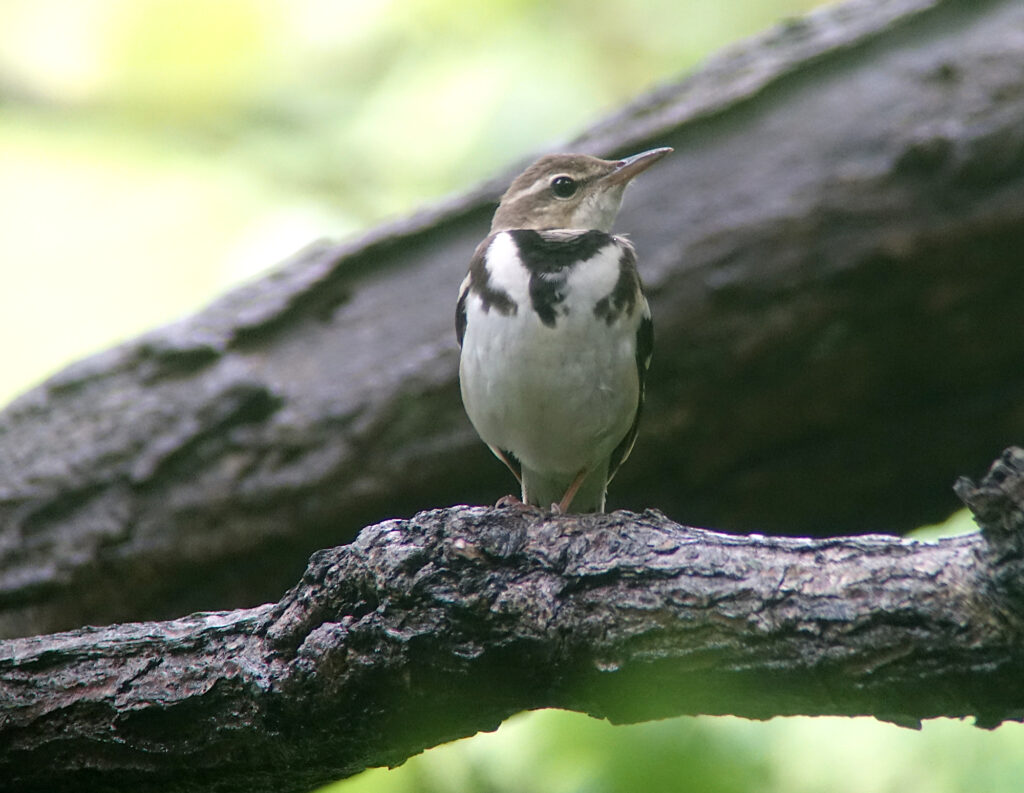
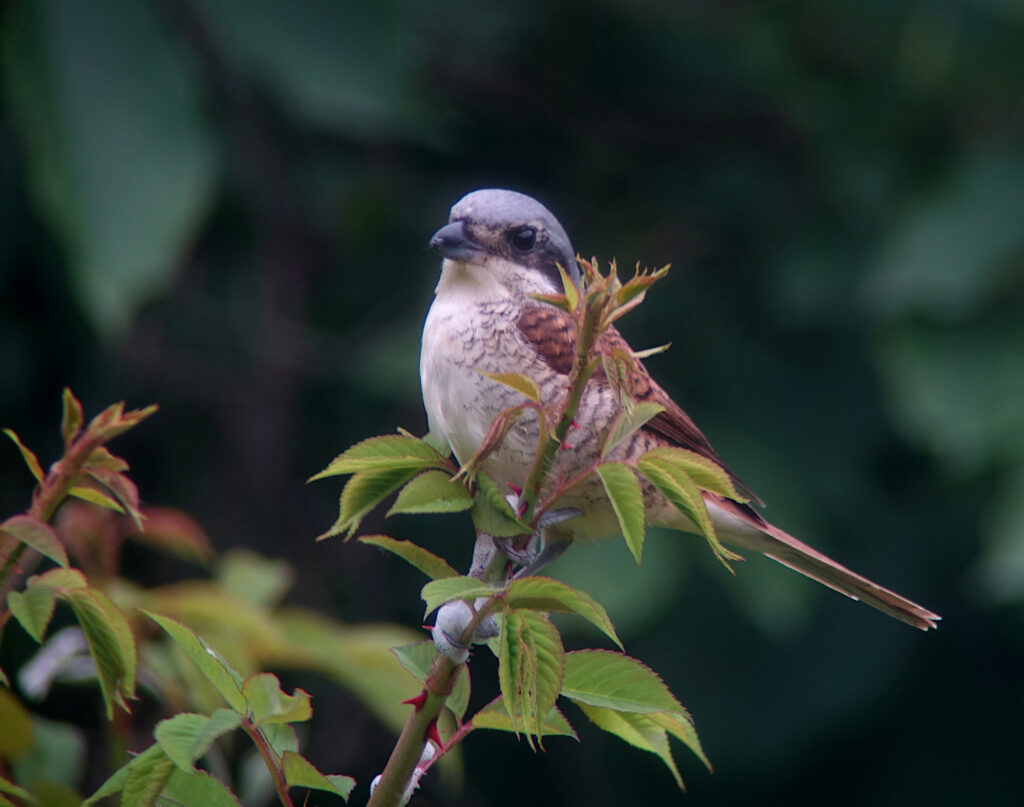
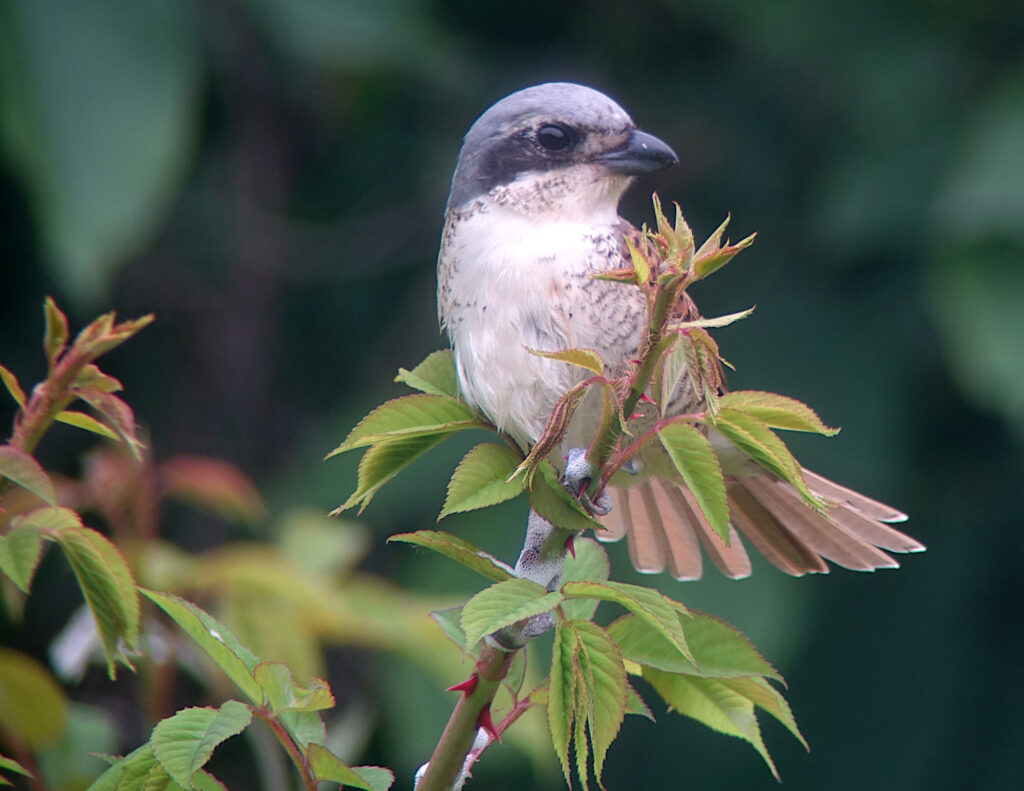
On June 2nd, eleven hours in the field in misty or hazy weather with southerlies were spent at Junghwadong and then in and around the Hwadong Wetland, ending with a brief scan of the sea next to “The Crag”, where an extremely late male Stejneger’s Scoter was still present. Birds of note during the day included a single Black Drongo and Purple Heron and a possible von Shrenk’s Bittern briefly heard “woofing” in the Hwadong Wetland. In addition, there was a singing “Barking Cuckoo” in Junghwadong (with similar-sounding vocalizations attributed in a recent paper by Russian scientists to Second Calendar-year female Oriental Cuckoo…), and a Far Eastern Oystercatcher chick and at least 23 Black-winged Stilt at the Hwadong Wetland, where the closest encounter in the haze was with a lone Eurasian Hobby.
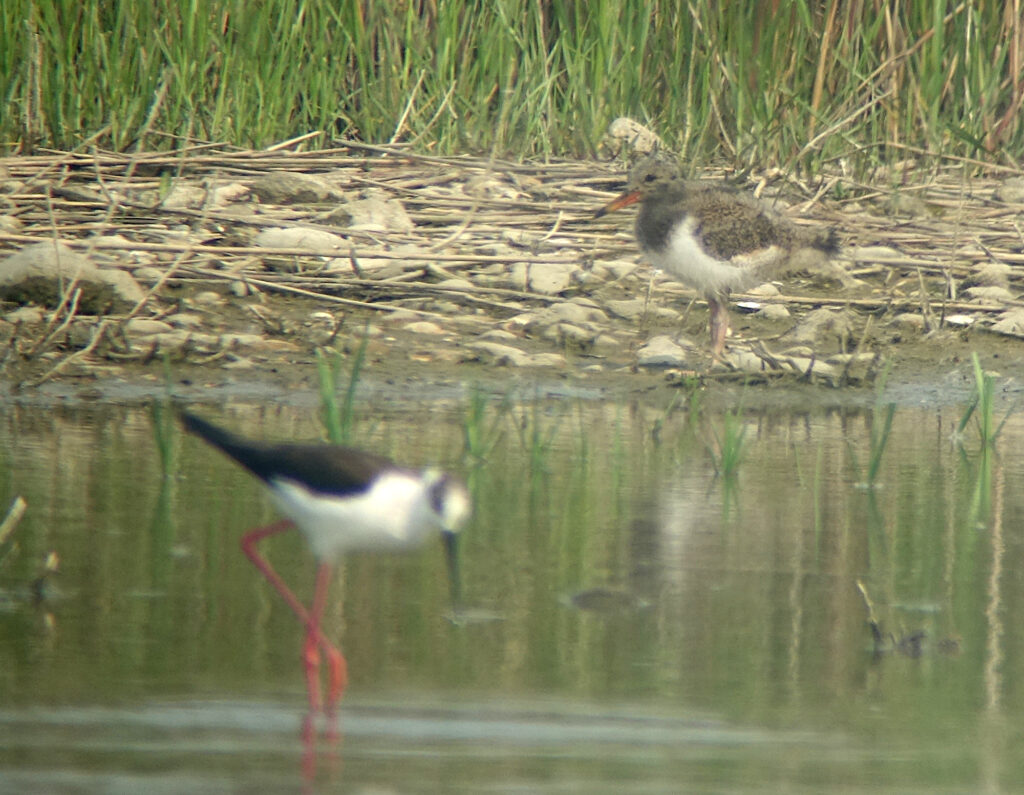
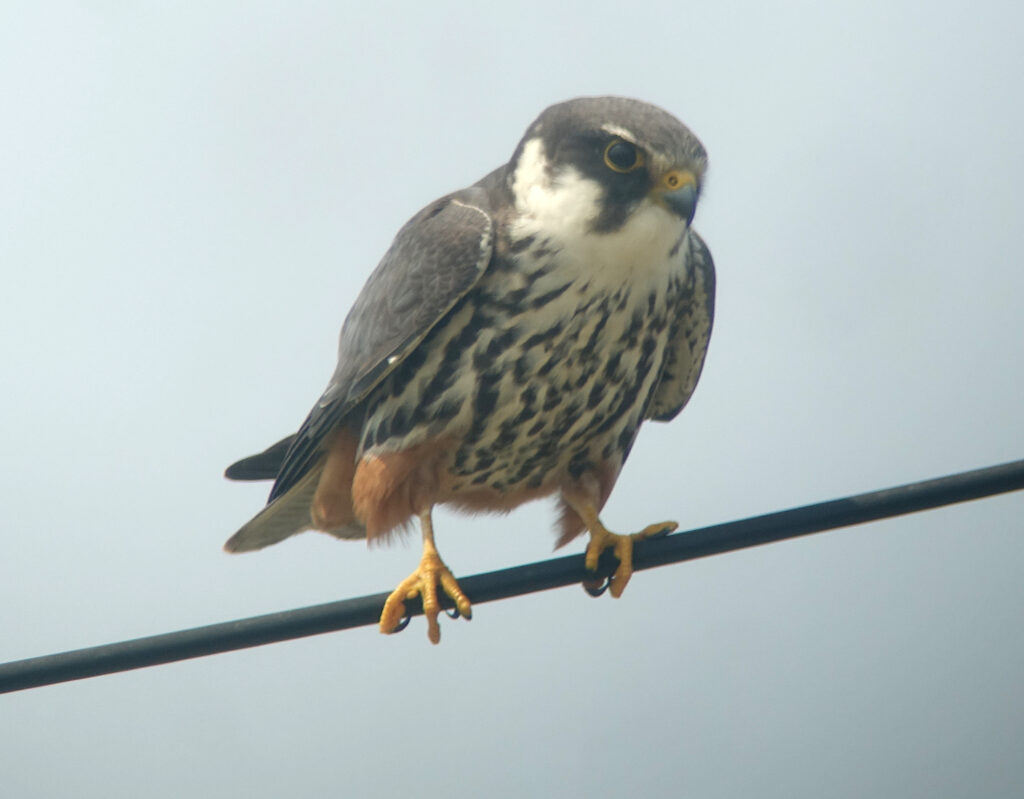
Being without a car, birding was impossible on the 3rd, with heavy rain all day between 5AM and 7:30PM when the skies started to clear and the winds swung around to the west, strengthening through the night. By dawn of the 4th, conditions were misty with moderate westerlies. At Dumujin, highlights included a White-shouldered Starling and two Black Drongo briefly at dawn, followed by a briefly-singing Black Paradise Flycatcher. In Yeonhwari, a male Watercock showed briefly; and at Junghwadong, I found my first Yellow Bittern of the spring feeding at the reservoir and had brief views of a clutch of seven Eastern Spot-billed Duck-lings. The day’s highlight was a possible Common Swift: checking a group of Pacific Swifts, one looked all dark, but because of the angle of the sun, views were somewhat inconclusive. The day’s list is here on eBird.
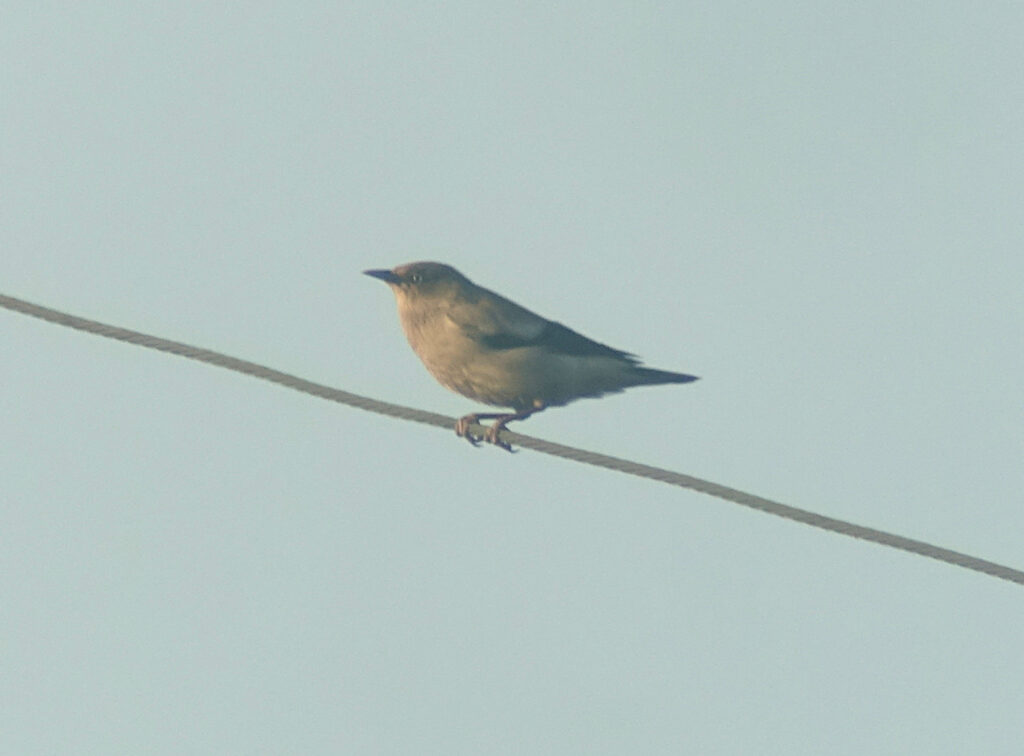
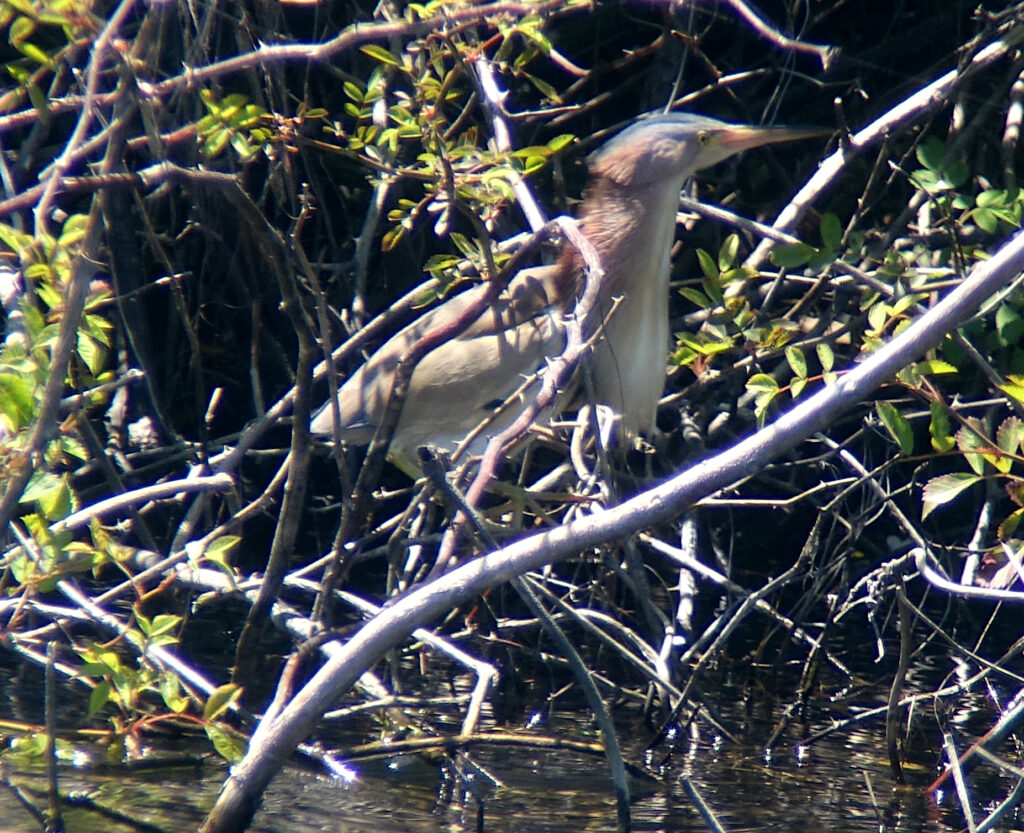
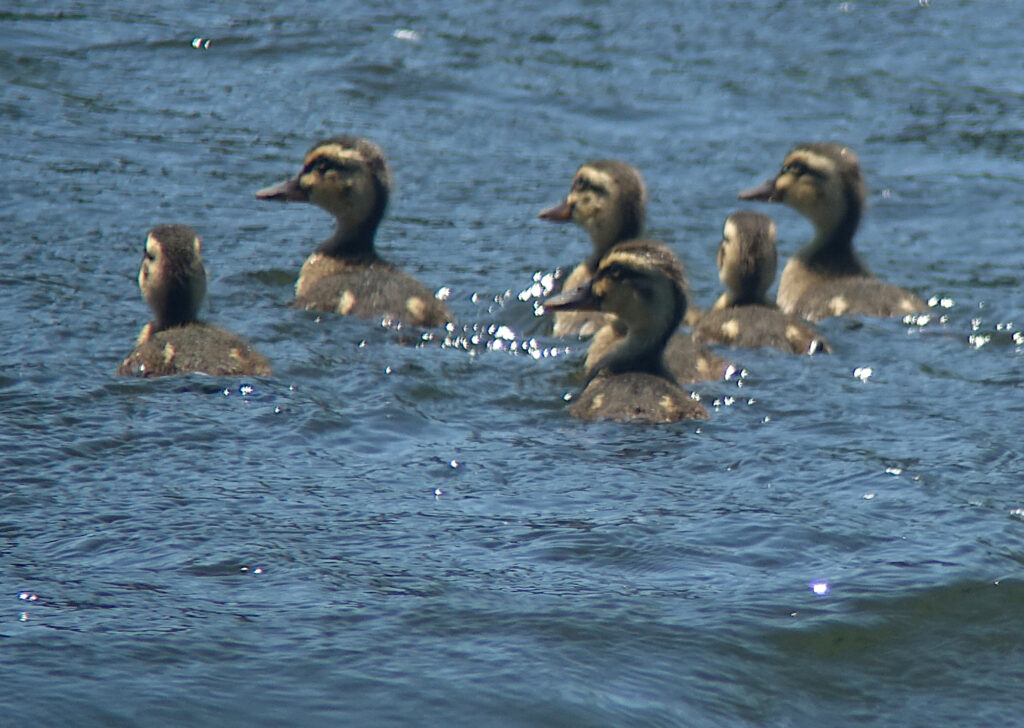
By dawn of the 5th, winds had become light and from the west-southwest, still flowing across the Yellow Sea from China. Expectations were high – and were exceeded! First surprise of the day was hearing the deafening metallic call of a female Asian Koel, a species with probably only 20-30 national records. This excitement was soon added to, when she flew across the road in front of me, into “First Valley”, followed soon after by a male: to the best of my knowledge, the first multiple arrival of this species in Korea! With the male and female trying to out-shout each other, surprise moved to a kind of birder’s shock – when a second male started vocalizing on the ridge above the valley: three Asian Koel, together!
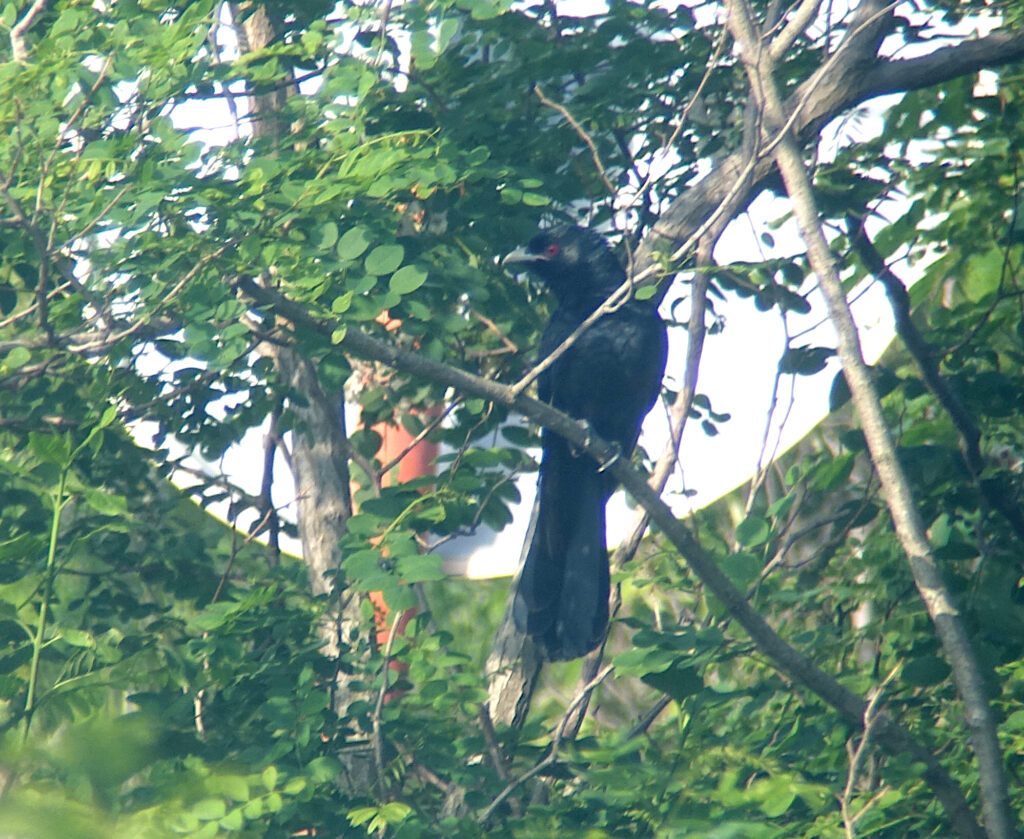
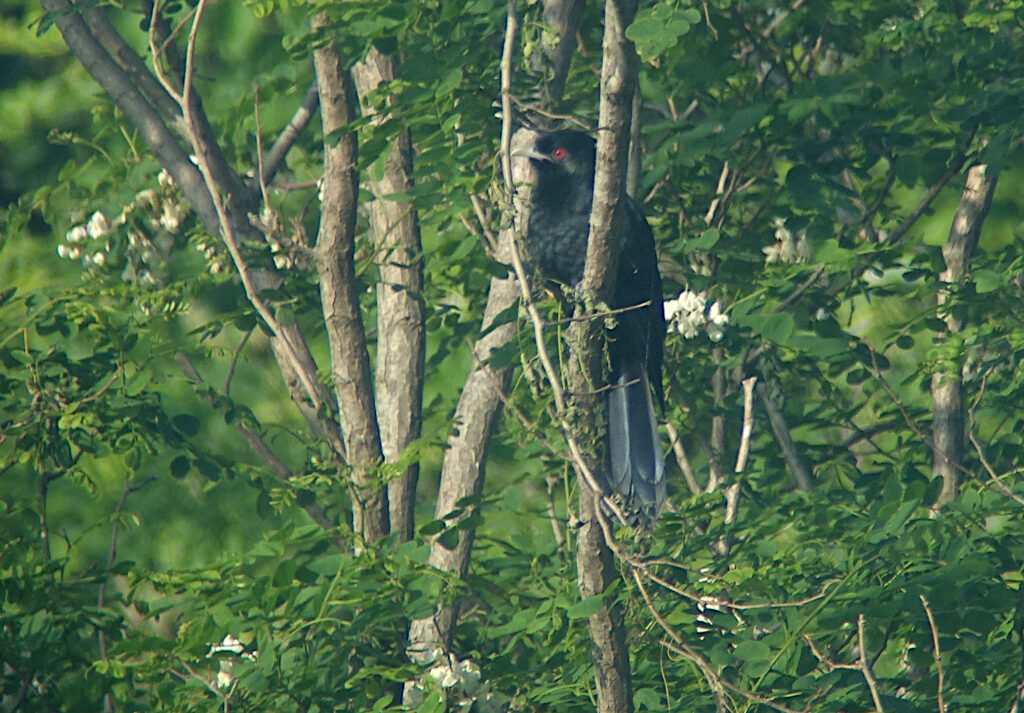
As waiting to take an image of Asian Koel, a Gray’s Grasshopper Warbler started to sing, and first a Black-faced Spoonbill and then a finch flew over calling: a Brambling. In June? A personal first. Moving to the ridge, not one but three Brambling were sitting on wires.
Down to best fields and the Jinchon reed-bed. Two doves flew past: one a typically bulky Oriental Turtle Dove, the second much smaller, diminutive even, with a sawn-off tail: Red Turtle Dove, another national rarity with fewer than 10 records a year. Both birds landed on wires over the reedbed, with the Red Turtle Dove shuffling along the wire to sit within a few cm of the bird’s giant companion.


Walking along the edge of the reedbed towards these two doves, to a constant “chorus” of Oriental Reed Warblers, first one then another Yellow Bittern flew up to drop down again rapidly. The fifth out of eight small bitterns to fly up like this was heavily streaked below but lacked the patterned upperwing of Yellow. Instead, she showed plain warm salmon upperwings: female Cinammon Bittern. No images and only my second on Baekryeong in eight years of this national rarity (assessed as V1 by Birds Korea).

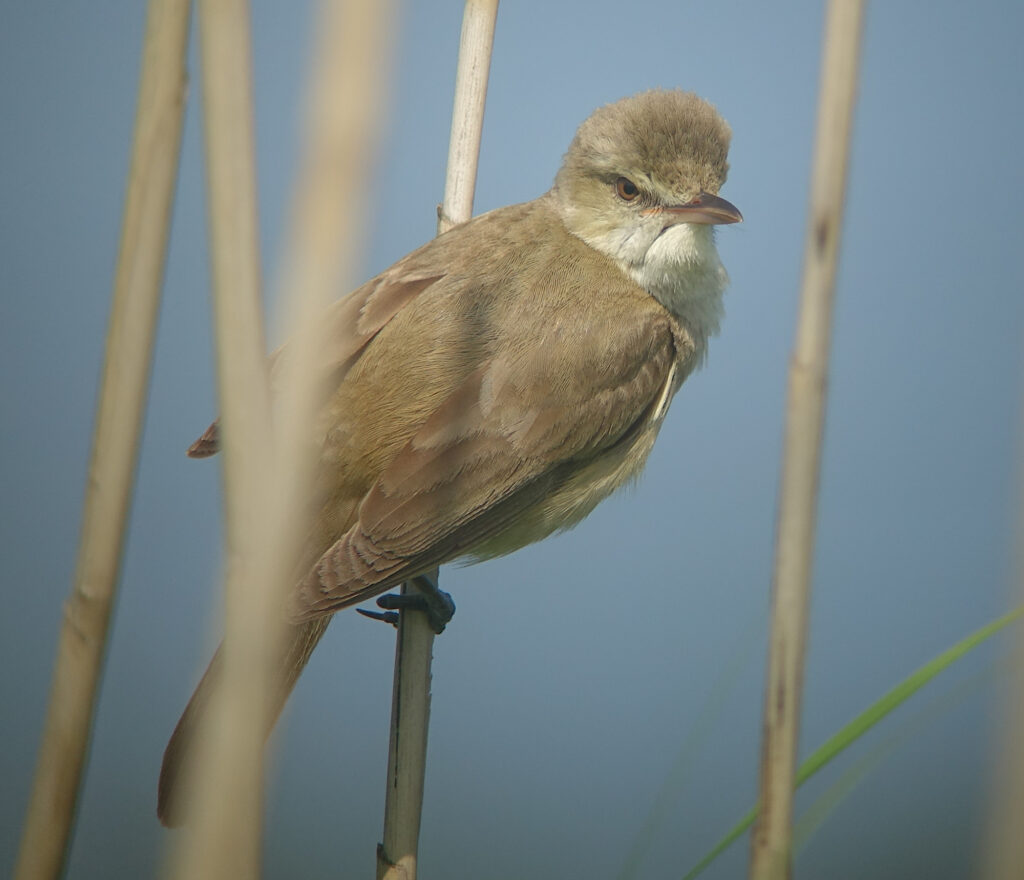

Continuing my slow crawl along the reedbed edge, up flew the first of five calling Pechora Pipit, which were joined in flight by a very late Olive-backed Pipit and Richard’s Pipit. Then perhaps the biggest miss of the day. A warbler – like a Black-browed Reed, but cold grey brown above and looking proportionately much longer tailed – flew out of low tangled grasses toward the reed bed proper before disappearing. Views were very poor. I reached for my phone and downloaded the song of Blunt-winged Warbler from XC. No response to playback. I waited but nothing.
Back on to the road and two Chinese Egrets flew up out of an especially good-looking wet rice-field. One landed on a pole in the field, the other perched more awkwardly on the wires themselves, occasionally caught off balance by the wind. Although Little Egret and some of the smaller herons perch on wires, this was my first time to see Chinese Egret perched up like this.
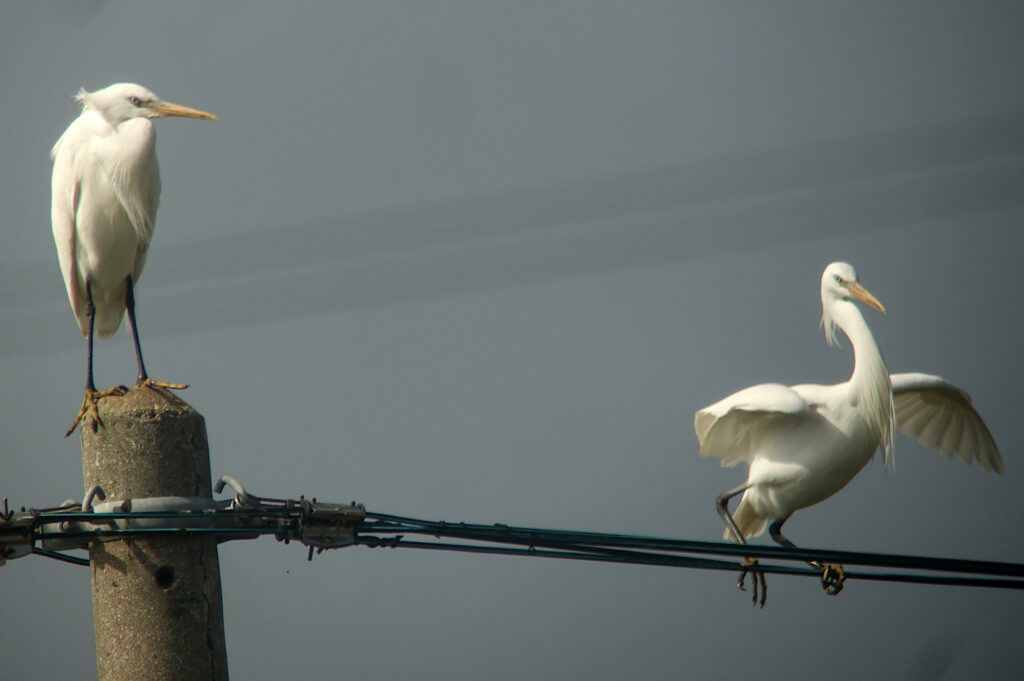
I needed to make a decision: either stay in Jinchon to invest time waiting for the warbler to reappear; or take the bus to the west of the island. I decided to try Dumujin out. On arrival, the second Red Turtle Dove of the day was perched up on wires. However, it was now midday, sunny and increasingly warm (for the first time this spring), and there were few birds to be seen or heard, with the exception of a small number of reed warblers and what sounded like a Dusky Thrush. Best was ~3 Swinhoe’s White-eye (first June record?), including one giving vocalisations similar to Warbling White-eyes near the nest. Other birds of note included an oddly vocalizing Oriental Scops Owl, a male Chestnut-eared Bunting and great views of Chinese Pond Heron. After a few hours, returning to the bus stop, I could see something sitting up high on the top of a pole on the hillside. Expecting a Blue Rock Thrush, the bird in the scope resolved obviously into a Dusky Thrush – my first ever in June. Watching that bird through the scope, I noticed a group of swifts hawking insects in the sky behind him. Pacific Swift, Pacific Swift and – oh but of course on this strangest of days – one that looked more truncated or shorter-tailed and at this angle was slightly paler than the Pacifics – all brown apart from the creamy throat. The bird flicked from side to side: the rump was indeed the same brown colour as the upperparts: Common Swift. The fourth national rarity of the day and a great bird to help close my Baekryeong spring. Checklist for the day is here on eBird.
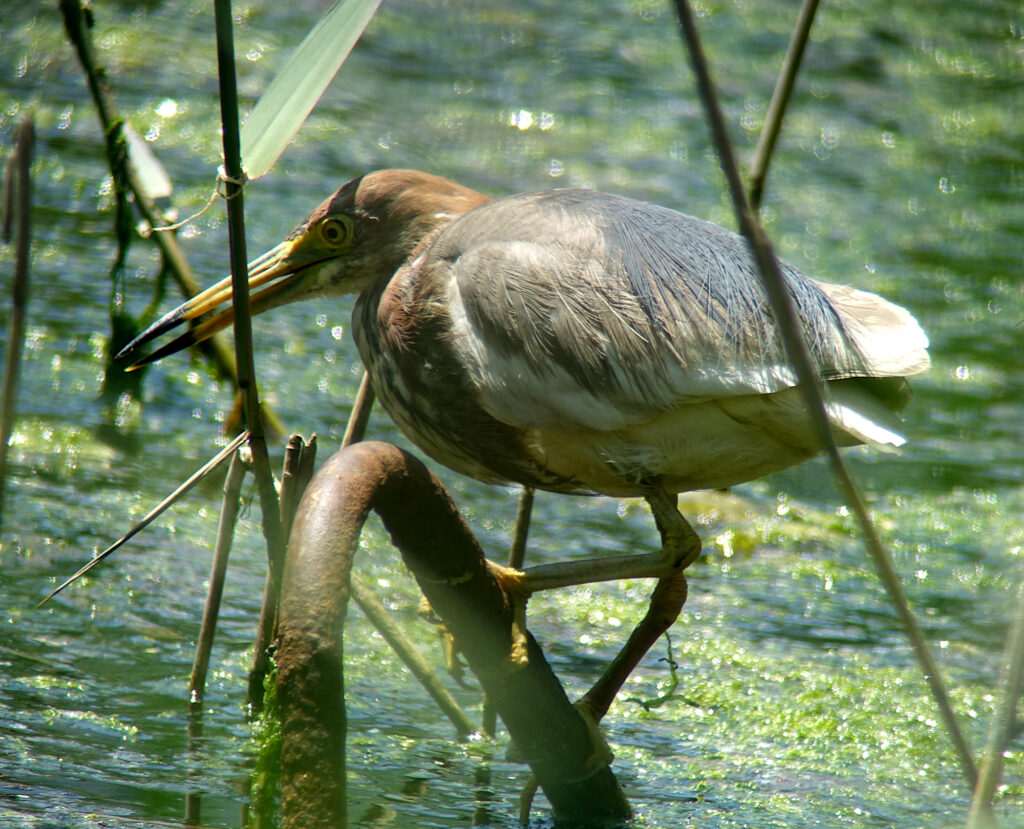
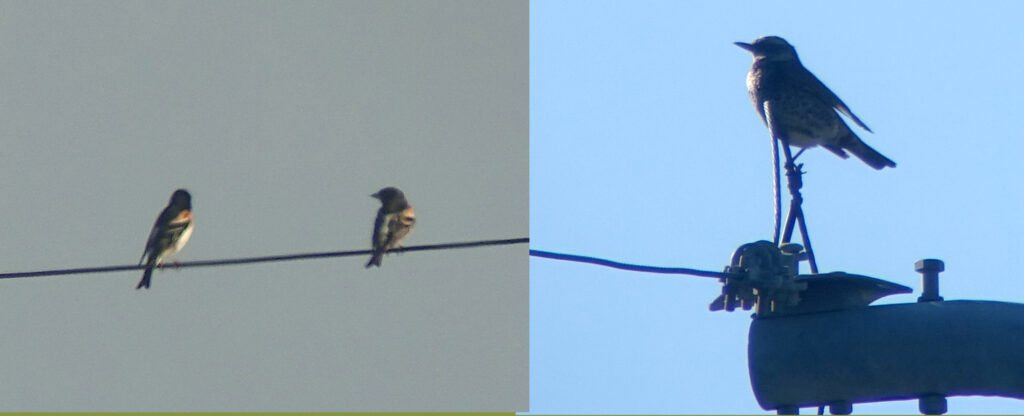
On 6th, Jinchon was shrouded in dense fog. There were now two Black Drongo and a few Black-naped Oriole in the fields, but little else. I needed to head back to the mainland for meetings on 7th and 8th in Yeoncheon. The Munhwa managed to get me on to the early morning boat – delayed for 7 hours – leaving at lunchtime back to Incheon. Much of the 5.5 hour boat ride was fogged out, and the only bird of note was a single Parasitic Jaeger.
Based on eBird Checklists, over 220 species were logged on Baekryeong this spring. The real total seems likely to be rather higher – even though a few species (e.g. Lesser Cuckoo) seemed to be oddly absent this spring.









